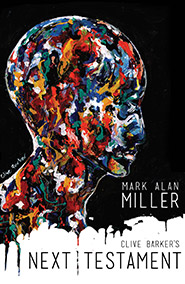

The Loney, by Andrew Michael Hurley
Houghton Mifflin Harcourt, 2016
ISBN: 9780544746527
Available: Kindle ebook, print, Audible audiobook
The Loney, set in 1976, is told in a series of recollections for a majority of the book by our narrator, Smith. It centers on what was supposed to be a pleasant trip to a small community, followed by a pilgrimage to a shrine in northern England. Father Wilfred, the priest of the local church, has passed away suddenly, and the bishop has selected Father Bernard as his replacement. Father Wilfred often took a small number of his parishioners, including the Smith family, to the shrine, during Easter. Father Bernard proposes a trip for his first Easter at his new post, much to the chagrin of the young Miss Bunce, who suggests a new locale; but the parishoners venture to the traditional place. This is a key theme throughout the novel: the “new” wanting to, according to traditionalists, encroach on the “old”, especially when it comes to religious practices and belief.
This trip with Father Bernard is meant to be special: a time for the new priest to engage with some of his new flock, for the parishoners and other guests to visit the shrine, and for God to heal Hanny, the narrator’s disabled brother. Hanny only communicates through objects, and only Smith knows how to translate his language of things. When the boys aren’t in prayer or at meals with the group, they wander out to the coastline known simply as the Loney.
Much of the story juxtaposes the old guard with the new, especially when it comes to the endless comparisons between Father Wilfred and Father Bernard by the matriarch of the Smith family. She is so used to how things had been done for years that she can’t seem to accept that things inevitably change. She is constantly telling Bernard exactly what the previous priest did, and when, and she expects tradition to be obeyed. She’s highly unlikable, from my perspective. While it can be argued that she is just doing what she thinks she needs to protect her fellow parishioners, that she knows how things need to be handled, her self-satisfied smirks make her an unsympathetic character. She “knows” that God will heal her son, even though it hasn’t happened in years previous. She “knows” the exact time when the priest is to lead the visitors in prayer, and where he is to stand. She just knows how everything is meant to be. When the religious pilgrimage happens, and they find the shrine uncared for, she can’t believe that the caretaker would have left it in such a state. When someone mentions that there may not be a caretaker, as shrines aren’t used as much anymore, she is in complete denial. How she treats Hanny, her own son, in this scene, is particularly heartbreaking.
There are times when the narrator discusses his time under Father Wilfred’s guidance as an altar boy, and his perception regarding his mother’s want for him to enter into the clergy when he graduates. One striking feature of Father Wilfred’s personality is his strictness. Given what happens to him during his last trip to the shrine, it makes me wonder about his religiosity from the very beginning. This is also a story of a priest in his seventies who loses his religion, and it terrifies him. With that realization, he tries to save a dead man from being pulled under the waves, finding there is nothing, just nothing. I can’t help but wonder of his strictness was more for himself than his congregation. Was he doubting, and not admitting it to himself, long before that time?
The last quarter of the book switches from the events at the shrine 40 years ago, to the present day. Smith, who abandoned his religion years ago after reading Father Wilfred’s diary, is now seeing a psychiatrist and working as a museum archivist. Hanny can now speak: he has a wife, children, and a career as a priest. Then a child’s remains are discovered during a winter storm on the Loney, and Hanny goes to Smith to try to piece his memories of the past back together.
The Loney is not fast-paced and plot-driven, but is more of an atmospheric, literary horror, although suspense is threaded very well throughout the story. The wet English coastline and small community create the perfect setting for a Gothic novel. The suspicious small town inhabitants and their behavior toward the visitors lends the story the perfect amount of tension. Things meant to frighten people away from certain areas are found in the wetlands, such the silhouette of what looks like a hanging man in the dark of the wetland forest, but turns out to be something else entirely. Horror also lies in relationships between some of the characters. It can also lie in the Catholic symbolism and the relation to various happenings in the novel.
I found this to be a very well written-work. The story was incredibly engaging, and lingers with me. Perhaps that, too, is where some of the horror lies. It haunts you for some time after you finish it.
Hurley won the Costa First Novel Award for The Loney in 2015.
Recommended.
Reviewed by Lizzy Walker







Follow Us!